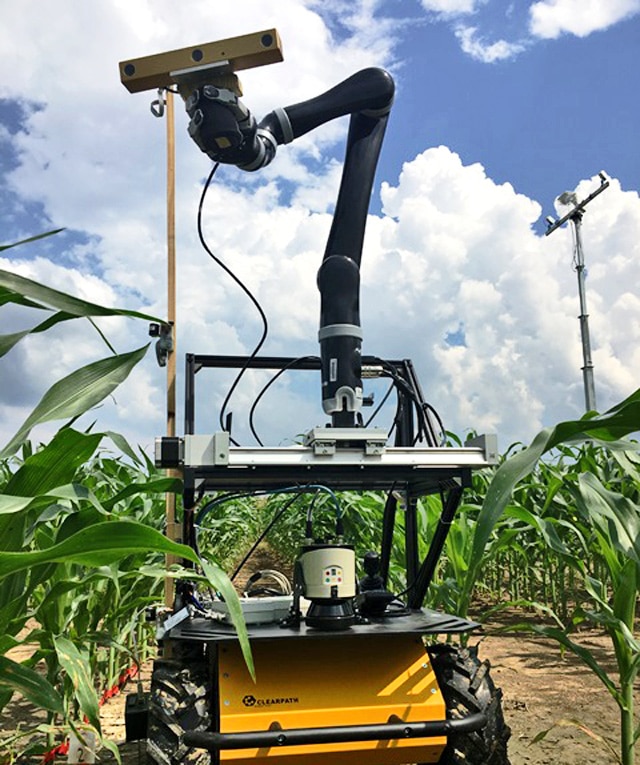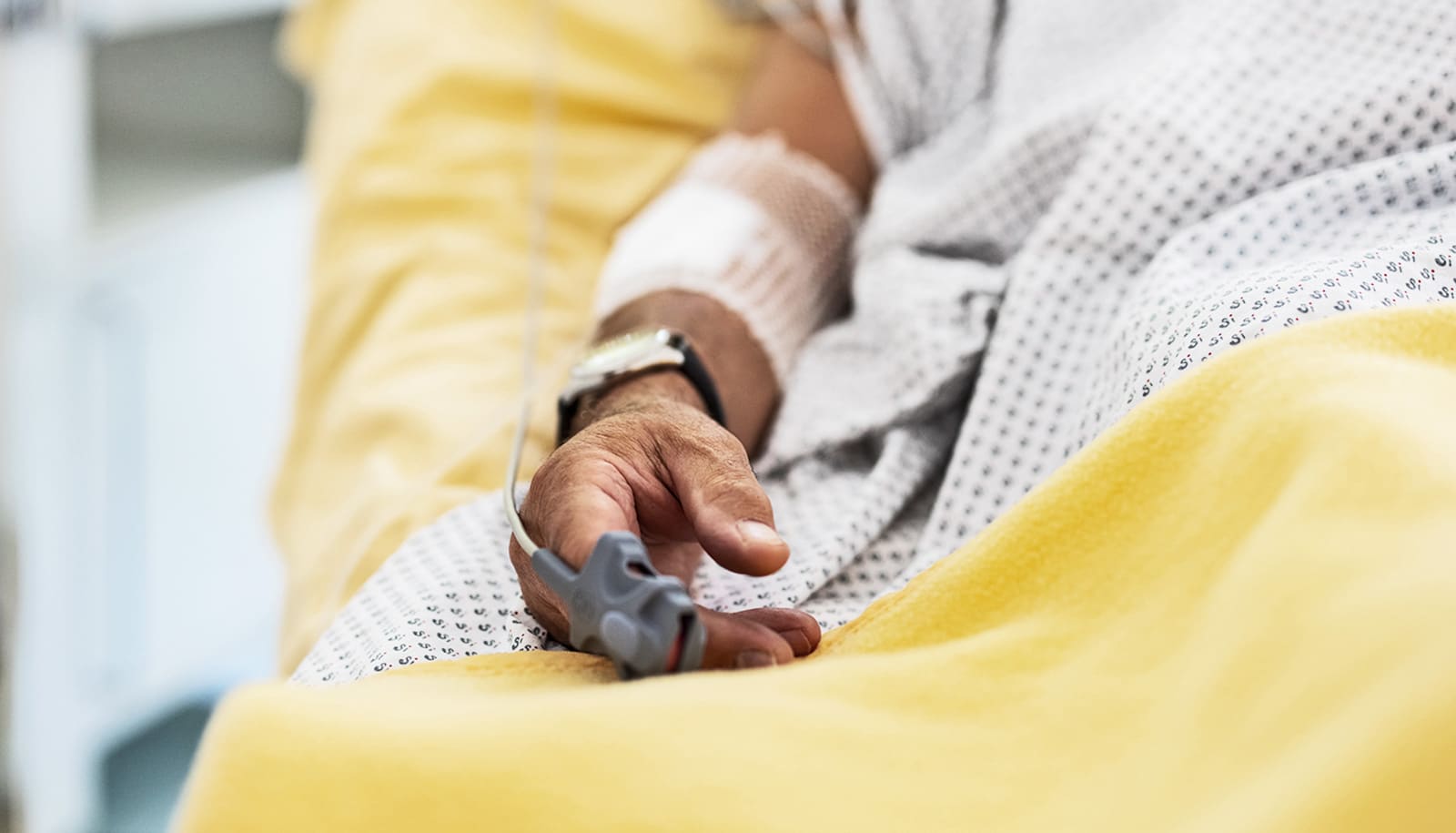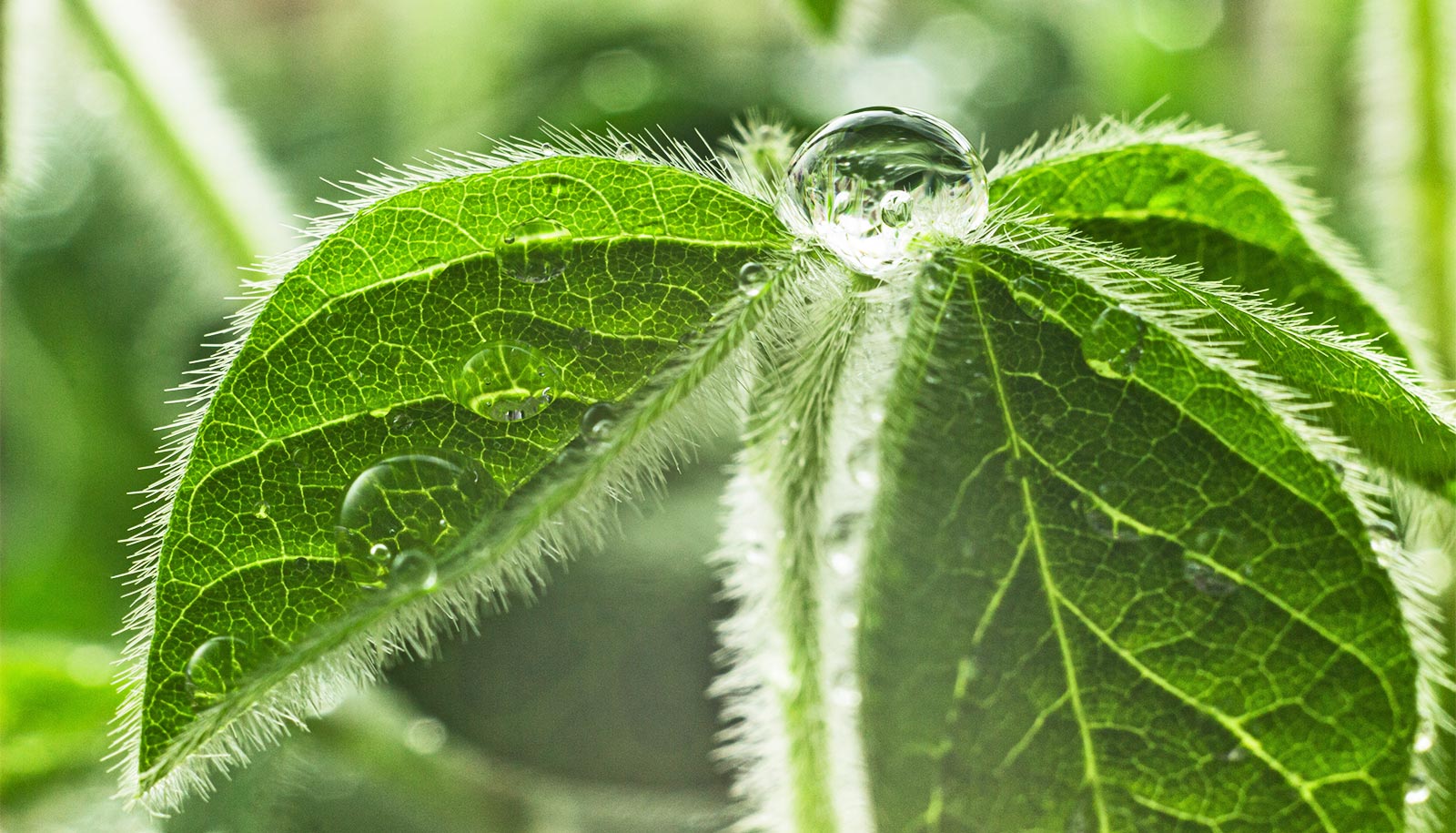A tower and robot vehicle duo can accurately create 3D models of plants and collect data on both regions of crops and individual plants.
The mobile sensor tower and an autonomous robot vehicle equipped with three levels of sensors and an additional robotic arm help complete a complex process called plant phenotyping. This involves assessing growth, development, yield, as well as tolerance and resistance to environmental stressors, by correlating these to the physiology and shape of the plants.
“The Vinobot collects a large variety of data,” says Gui DeSouza, associate professor of electrical engineering and computer science at the University of Missouri. “For example, it uses three sets of sensors to collect temperature, humidity, and light intensity at multiple wavelengths, and it collects those at three different heights of the crop.”
The tower inspects a 60-foot radius of a given field to identify areas affected by environmental stresses, while the vehicle collects data on individual plants. Additionally, the vehicle has a robotic arm that it uses to move around the plant and create a 3D model of each one.
“We can measure from the tower if the plants are under any stress, such as heat, drought, etc.” says DeSouza, whose Vision-Guided and Intelligent Robotics Laboratory (ViGIR) inspired the robots’ names: Vinobot (the vehicle) and Vinoculer (the tower). “Then the tower can tell the mobile robot to go to a particular area of the field and perform data collection on the individual plants.”

While the tower covers only a relatively small area, it can easily be moved around to cover an entire field. The cost-effectiveness of the towers means it wouldn’t be expensive to have more than one operating at a time.
Unpiloted aerial vehicles such as quadcopters can take time, as those devices often require Federal Aviation Administration clearance and experienced pilots to operate them over a field. Those vehicles also can be expensive, costing up to between $16,000 and $80,000 as opposed to Vinoculer’s estimated $5,000 price. The researchers outline these figures in the journal Sensors.
Scientists want robots to build big space telescope
“They are not only inexpensive; they are also available 24/7, and can generate a lot more data than any aerial vehicle” DeSouza says.
DeSouza worked with researchers from the College of Agriculture, Food and Natural Resources to study the effects of climate change on crops in Missouri. The effort is part of a larger study, funded by the National Science Foundation, to understand the overall effects of climate change in Missouri.
Source: University of Missouri



